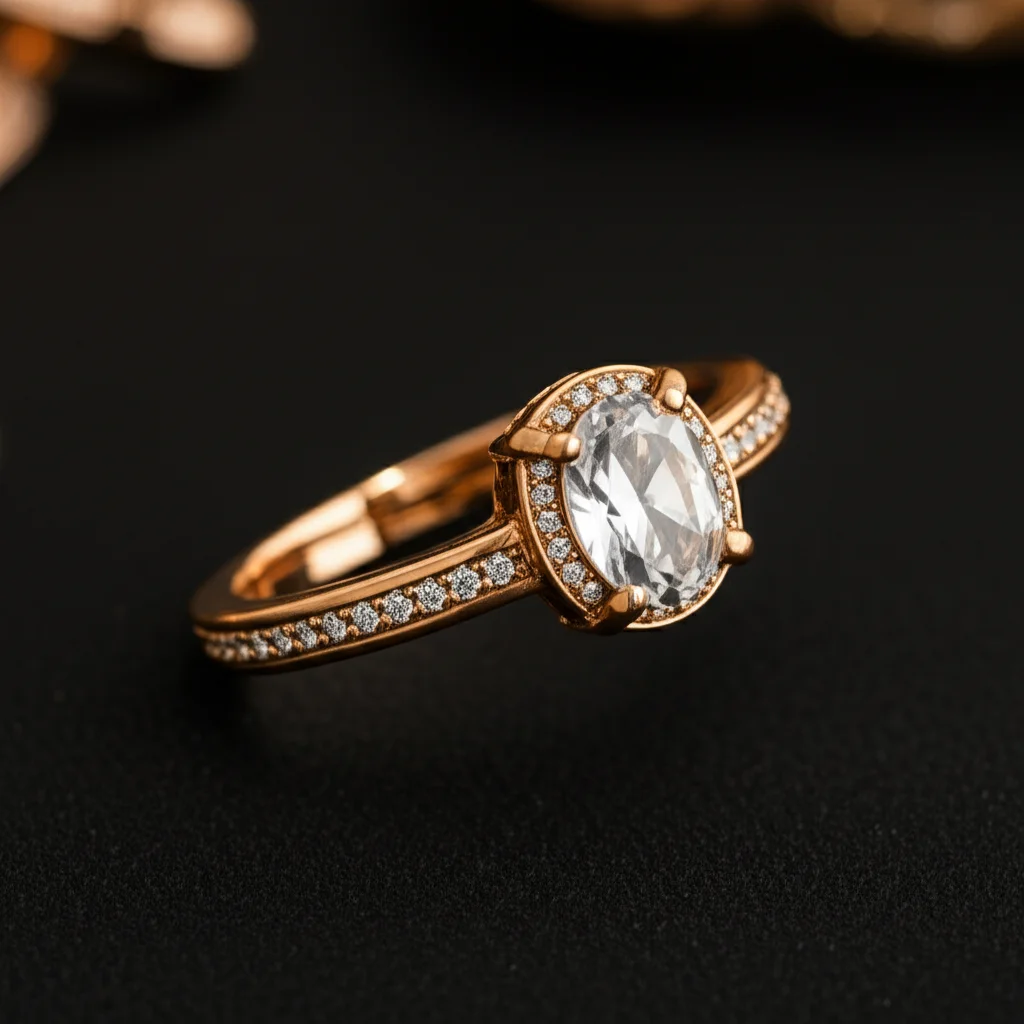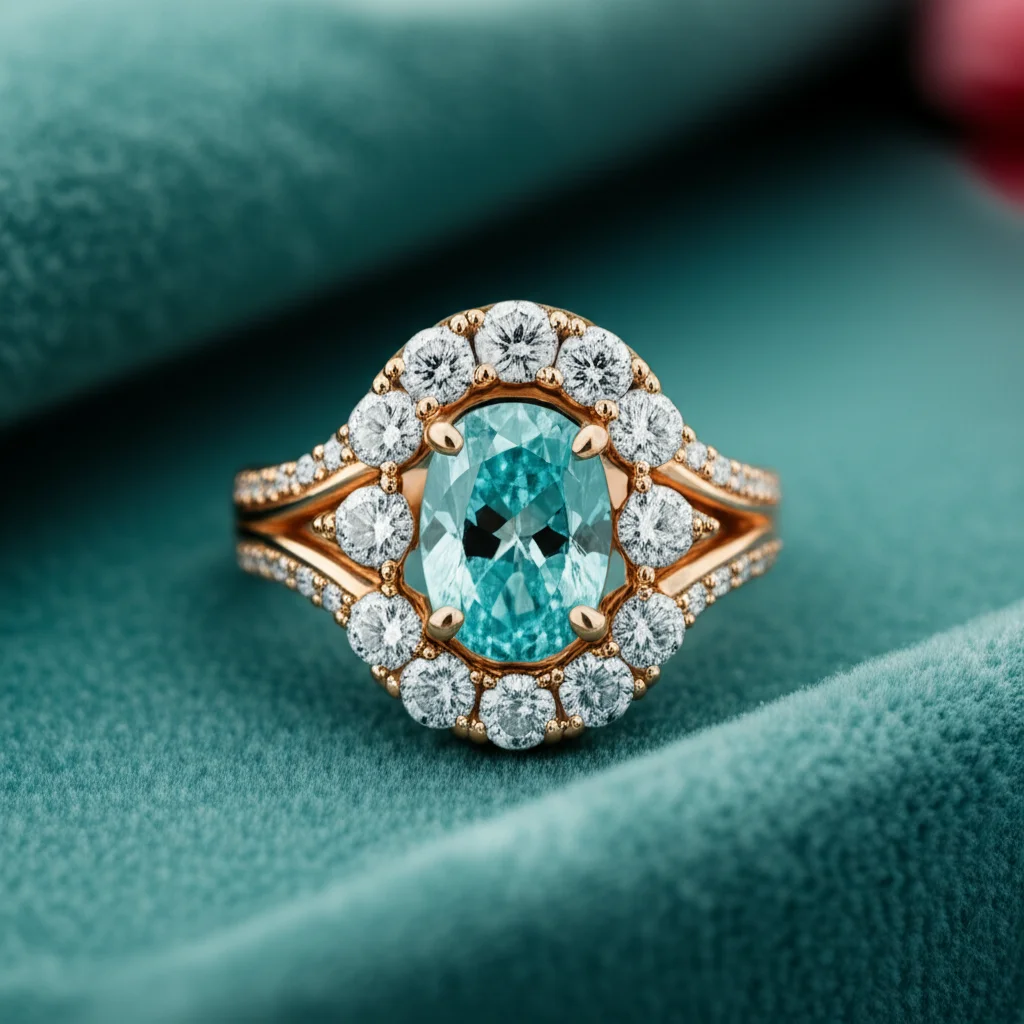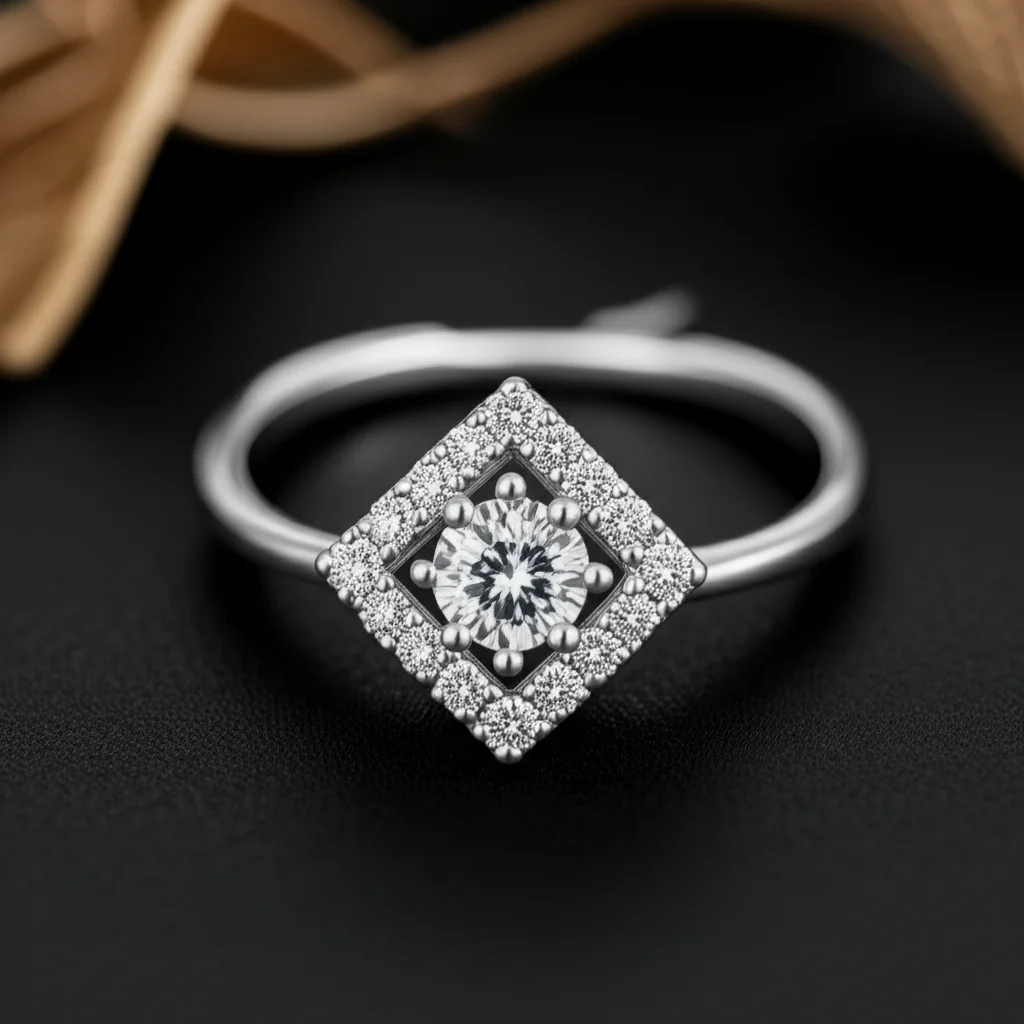· Todd Martin · Jewelry Care · 11 min read
How To Clean Plated Jewelry

Restore Your Shine: How To Clean Plated Jewelry Safely
Have you ever noticed your favorite plated necklace losing its luster? It is a common problem, but you do not need to say goodbye to those cherished pieces. Knowing how to clean plated jewelry properly helps keep it looking beautiful. This guide will show you simple, safe methods to restore its shine.
We will cover the best tools and techniques for cleaning. You will learn what mistakes to avoid. We will also share tips for protecting your jewelry long-term. By following these steps, you can enjoy your plated jewelry for many years.
Takeaway
To clean plated jewelry effectively and safely:
- Use only mild soap and warm water.
- Gently wipe or brush with a soft cloth or brush.
- Avoid harsh chemicals, abrasive cleaners, and excessive scrubbing.
- Always dry thoroughly immediately after cleaning.
- Store properly to prevent future damage and tarnishing.
Cleaning plated jewelry involves using a mild soap solution and a soft cloth. Gently wipe the surface to remove dirt and oils. Rinse quickly with cool water. Pat the piece completely dry to prevent water spots and damage to the thin plating.
Understanding Plated Jewelry: What Makes It Unique?
Plated jewelry gives you the look of solid gold, silver, or other precious metals without the high cost. It is made by bonding a thin layer of precious metal onto a base metal core. This base metal is often brass, copper, or nickel. The outer layer provides the shine and color you see. This process makes beautiful, affordable accessories.
The thin layer of plating is what makes it unique. It also makes it delicate. This thin coating can wear off over time. It is important to handle plated jewelry with care. Harsh chemicals or abrasive cleaning methods can quickly damage the plating. This reveals the base metal underneath.
Knowing your jewelry is plated helps you choose the right cleaning methods. For instance, cleaning gold-plated jewelry requires different care than solid gold. The same applies to silver-plated items. Plated pieces offer style and affordability. They just need specific attention to last. If you have a gold-plated chain, these principles are especially important. Generally, understanding how to care for fake jewelry applies directly to plated items.
Essential Supplies for Gentle Plated Jewelry Cleaning
Gathering the right tools before you start cleaning is important. You want supplies that are gentle on your jewelry. Harsh chemicals or abrasive materials can strip the thin metal plating. This can ruin your piece quickly. Using the correct items ensures a safe cleaning process.
You will need a few simple things. First, get a mild, non-detergent soap. Dish soap without strong degreasers works well. Avoid soaps with perfumes or harsh additives. Next, prepare a bowl of warm water. The water should be lukewarm, not hot. Hot water can sometimes loosen settings or harm certain materials.
A soft, lint-free cloth is essential for drying and gentle wiping. Microfiber cloths are excellent choices. You might also need a soft-bristled brush. A baby toothbrush or a very soft paintbrush works great for getting into small crevices. Cotton swabs are helpful for detailed work. These simple supplies help you clean plated jewelry safely.
Step-by-Step Method: How To Clean Plated Jewelry at Home
Cleaning your plated jewelry at home is simple when you follow a few steps. This method is gentle and effective. It helps remove dirt and oils without damaging the delicate plating. Always work carefully to protect your cherished pieces.
Initial Inspection
Before you start, look at your jewelry closely. Check for any loose stones or broken parts. Cleaning might worsen existing damage. If you find issues, consider having a professional repair your item first. Note any areas that look particularly dirty or dull.
Gentle Soaking
Prepare your cleaning solution. Add a few drops of mild soap to a bowl of warm water. Stir it gently to create a soapy solution. Place your plated jewelry into the solution. Let it soak for no more than 5-10 minutes. This helps loosen dirt and oils. Soaking for too long can harm the plating.
Soft Scrubbing
After soaking, remove the jewelry from the water. Use a soft-bristled brush or a cotton swab. Gently scrub any dirty areas. Focus on crevices and areas with buildup. Do not apply much pressure. The goal is to lift dirt, not to scrub away the plating. Be especially careful around stones or intricate designs.
Rinsing Properly
Rinsing is a very important step. Hold your jewelry under cool, running water. Make sure to rinse off all soap residue. Soap left on the jewelry can dry and leave marks. It can also attract more dirt over time. Rinse thoroughly until the water runs clear.
Thorough Drying
Immediately after rinsing, dry your jewelry completely. Use a soft, lint-free cloth, like microfiber. Gently pat the piece dry. You can also let it air dry on a clean towel for a short time. Make sure no water spots remain. Trapped moisture can cause tarnishing or damage the plating. Your old jewelry also benefits from careful drying to prevent further damage.
Tackling Specific Plated Jewelry Stains and Tarnish
Plated jewelry can develop dullness or minor tarnish over time. Sometimes, it can even leave green marks on your skin. These issues are common. Addressing them quickly helps maintain your jewelry’s appearance. Remember, gentle methods are always best for plated pieces.
Removing Green Marks
Green marks on your skin usually mean the base metal is reacting with your skin’s oils or moisture. This happens as the plating wears thin. To clean this, gently wipe the jewelry with a soft cloth dampened with mild soap and water. Dry it immediately. Applying a clear sealant, like clear nail polish, to the inside of rings can help prevent this issue in the future. Just be careful not to get it on the outer plating.
Restoring Shine to Dull Pieces
Dullness often comes from accumulated dirt, skin oils, and everyday residue. A simple mild soap and water bath, as described in the step-by-step section, works wonders. After cleaning, a quick, gentle buff with a dry, soft cloth can bring back some shine. Do not use polishing cloths meant for solid metals. These are often abrasive and can remove the plating. Focus on gentle wiping to restore luster.
Addressing Minor Tarnish
Plated jewelry can show signs of tarnish, especially silver-plated items. This looks like a darkening or dulling of the surface. For very minor tarnish, the mild soap and water method might be enough. If not, you can try a slightly damp cotton swab with a tiny bit of baking soda. Rub it very gently and only on the tarnished spot. Rinse it off immediately and thoroughly. Baking soda is abrasive, so use extreme caution. Avoid vigorous rubbing. This method is a last resort for light tarnish. It is better to prevent tarnish through proper care and storage.
Common Mistakes to Avoid When Cleaning Plated Jewelry
Cleaning plated jewelry requires a delicate touch. Many common cleaning methods for solid metals can destroy plating. Knowing what to avoid is as important as knowing what to do. These mistakes can quickly ruin your favorite pieces.
One major mistake is using harsh chemicals. Bleach, ammonia, or strong jewelry cleaners are far too aggressive for plated items. These chemicals can strip away the thin metal layer. They might also react with the base metal, causing discoloration. Always check the ingredients of any cleaning product. If it sounds strong, do not use it on your plated jewelry.
Another common error is using abrasive materials. Rough cloths, scrubbing pads, or even toothpaste can scratch the plating. These scratches are not just cosmetic. They remove the precious metal layer bit by bit. Once the plating is gone, it cannot be easily restored at home. Stick to very soft cloths and brushes.
Over-soaking your jewelry is another pitfall. While a short soak is fine, leaving plated items in water for hours or overnight can cause problems. Water can seep under the plating, leading to bubbling or corrosion of the base metal. This damages the integrity of the piece. Always limit soak times.
Improper drying also causes damage. If you leave plated jewelry wet, water spots can form. More importantly, moisture can accelerate tarnishing or corrosion of the base metal. Always pat your jewelry completely dry after cleaning. Air drying alone may not be enough, especially in humid environments.
Finally, avoid ultrasonic cleaners. These machines use vibrations to clean jewelry. While effective for solid metals, they are too harsh for plated items. The strong vibrations can loosen the plating from the base metal. This causes it to peel or chip off. Always hand-clean plated jewelry.
Protecting Your Plated Jewelry: Beyond Cleaning
Cleaning is only one part of caring for your plated jewelry. Preventing damage and tarnish is just as important. With a few simple habits, you can significantly extend the life and beauty of your pieces. Proactive care reduces the need for frequent cleaning.
One key protective measure is avoiding exposure to chemicals. Take off your plated jewelry before applying perfumes, lotions, or hairsprays. The chemicals in these products can react with the plating. This causes it to tarnish or wear away faster. Always put your jewelry on last, after your beauty routine.
Water is another enemy of plated jewelry. Avoid wearing your pieces while showering, swimming, or washing dishes. Chlorine in pools, salt in ocean water, and even tap water can accelerate tarnishing. Moisture can also get trapped underneath stones or in small crevices. This leads to corrosion of the base metal. Always remove your jewelry before any water-related activities.
Proper storage is also vital for longevity. Store your plated jewelry in a cool, dry place. Humidity is a major cause of tarnish. Consider using individual soft pouches or jewelry boxes with separate compartments. This prevents pieces from rubbing against each other. Scratches can expose the base metal. Anti-tarnish strips in your storage area can also absorb moisture and chemicals.
Finally, make regular, light cleaning a part of your routine. A quick wipe-down with a soft, dry cloth after each wear removes skin oils and dirt. This prevents buildup that can lead to dullness and tarnish. By being mindful of these practices, you can keep your plated jewelry sparkling and beautiful for a much longer time. It saves you effort and money in the long run.
FAQ Section
Can you use toothpaste to clean plated jewelry? No, you should not use toothpaste to clean plated jewelry. Toothpaste contains abrasive particles. These particles can easily scratch and remove the thin layer of precious metal plating. This action can permanently damage the piece. Always choose very mild soap and soft cloths instead.
How often should I clean my plated jewelry? Clean your plated jewelry as needed. If you wear a piece frequently, a quick wipe with a soft, dry cloth after each use is good. A more thorough gentle wash with mild soap and water can be done every few weeks or months. This depends on how dirty it gets. Do not over-clean.
Can plated jewelry get wet? It is best to keep plated jewelry from getting wet. Water can cause tarnishing. It can also lead to corrosion of the base metal if it seeps under the plating. Always remove plated jewelry before showering, swimming, or washing hands. Dry any accidental splashes immediately.
Why does plated jewelry turn green? Plated jewelry can turn green because the thin top layer wears off. This exposes the base metal underneath. This base metal, often copper or brass, reacts with your skin’s oils, sweat, or chemicals. This reaction causes a green discoloration on your skin or the jewelry itself.
How long does plated jewelry last? The lifespan of plated jewelry varies greatly. It depends on the thickness of the plating, how often you wear it, and your care habits. With proper care, thinly plated items might last a few months. Thickly plated items can last several years. Avoid harsh chemicals and moisture to extend its life.
Conclusion
Keeping your plated jewelry looking its best is not difficult. It simply requires a gentle approach and consistent care. We have learned that understanding the delicate nature of plated pieces is the first step. Using mild soap, warm water, and soft materials protects the thin metal layer. This helps avoid irreversible damage.
Remember to steer clear of harsh chemicals, abrasive scrubs, and ultrasonic cleaners. These common mistakes can quickly strip away the plating. Instead, focus on gentle techniques. Proper storage away from moisture and chemicals is also key. This prevents tarnish and extends the life of your beloved items.
By following these simple guidelines on how to clean plated jewelry, you can maintain its beautiful shine. You will enjoy your affordable yet elegant accessories for many years to come. Take the time to care for your plated pieces. They will continue to add sparkle to your everyday style.





